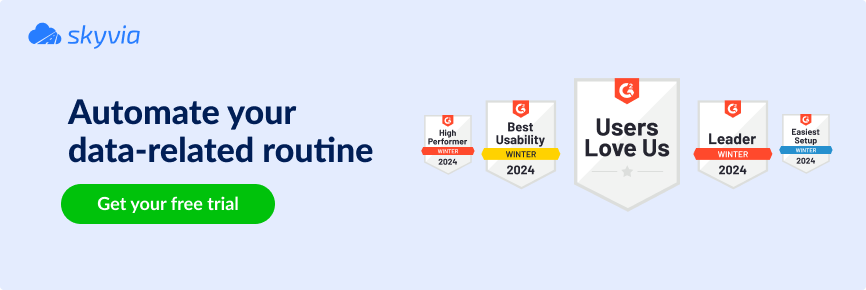MySQL reporting tools are like the bridge between storage and storytelling to make sense of all the data stored in MySQL databases. They pull out raw information and turn it into clear visual reports, dashboards, and charts.
With such systems, you don’t need to be a data wizard. Just a few clicks can get clear, shareable reports. They often come with handy features like:
- Drag-and-drop editors.
- Custom filters.
- Real-time data updates.
Whether tracking sales, monitoring website traffic, or analyzing user behavior, these solutions help you transform complex data into easy-to-read insights.
In this guide, we’ll explore the Top MySQL Reporting Tools for 2025 that help businesses create dynamic reports, track KPIs, and make data-driven decisions faster.
Table of Contents
- Considerations for Assessing MySQL Tools
- Top 10 MySQL Reporting Tools for 2025
- Improve Your MySQL Reporting With Data Integration Tools
- Comparative Analysis for MySQL Reporting Tools
- Kickstarting MySQL Reporting
- Conclusion
- FAQ
Considerations for Assessing MySQL Tools
When choosing the right tool, a few key factors make all the difference in how well it fits your needs and delivers value. The table below compares them based on the essential criteria for efficient, secure, and scalable data reporting.
| Criteria | Key Considerations | Samples |
|---|---|---|
| Compatibility | Check support for different MySQL versions, compatibility with other databases, and cross-platform availability. | Microsoft Power BI, Zoho Analytics |
Performance | Look for features like data caching, real-time updates, and performance optimization for big data loads. | Sisense, Knowi, Domo |
Features | Consider if it has drag-and-drop reporting, filtering, drill-down capabilities, and scheduled reporting. | Tableau, Datapine, SAP BusinessObjects |
| Scalability | Evaluate if the tool supports expanding queries, multi-source reporting, and handling increased data complexity. | Integrate.io, Domo, Datadog |
| Security | Look for encryption options, role-based access, secure connections, and compliance with security standards. | SAP BusinessObjects, Sisense |
Top 10 MySQL Reporting Tools for 2025
Tableau
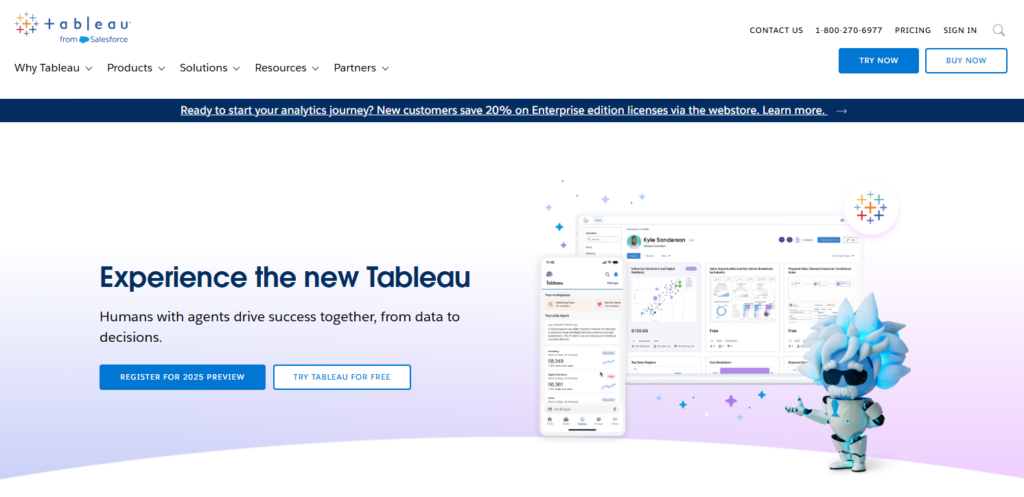
Tableau is a data visualization and BI tool designed to simplify the creation of interactive, shareable dashboards. It connects easily with MySQL databases, allowing users to transform raw data into detailed charts, graphs, and maps. Known for its intuitive drag-and-drop interface, Tableau enables users to perform deep analysis without advanced technical skills. Tableau’s robust community and extensive resources make it a favorite among beginners and advanced data professionals. With support for real-time analytics, it’s good enough for organizations needing frequent data insights.
Rating
Pricing
The pricing starts at $70/user/month. The free plan is available.
Pros
- Rich visualization options with drag-and-drop features.
- Excellent support and active community resources.
- Handles large datasets and complex queries effectively.
Cons
- Relatively higher cost per user.
- Limited data manipulation capabilities outside visualizations.
Datadog
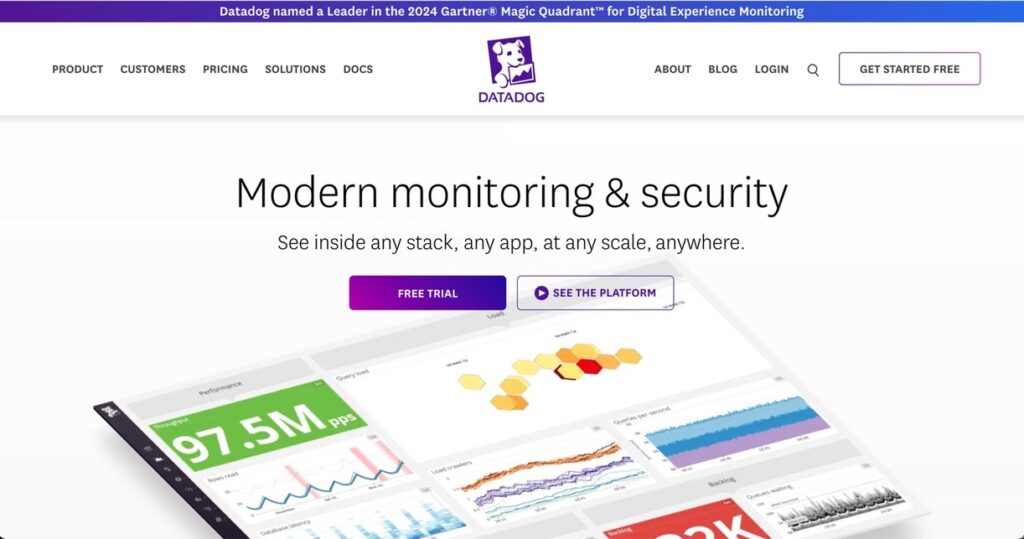
Datadog is a cloud-based monitoring and analytics platform with powerful data reporting capabilities for applications and infrastructure, particularly MySQL databases. It helps track database performance, providing real-time metrics, automated alerts, and in-depth analytics. Though primarily used for monitoring, Datadog offers flexible dashboards and visualizations, enabling users to correlate MySQL performance with application and infrastructure metrics. Its cloud-native setup is good for DevOps and IT teams managing large-scale systems.
Rating
- G2 score is 4.3/5
- Capterra score is 4.6/5
- TrustRadius score is 8.4/10
Pricing
The pricing is flexible and starts at $15/host/month. The free trial is available.
Pros
- Strong monitoring and alerting capabilities for MySQL.
- Real-time metrics with historical data insights.
- Easy integration with other infrastructure monitoring tools.
Cons
- Less suitable for traditional BI reporting.
- Higher costs when monitoring large numbers of hosts.
Integrate.io
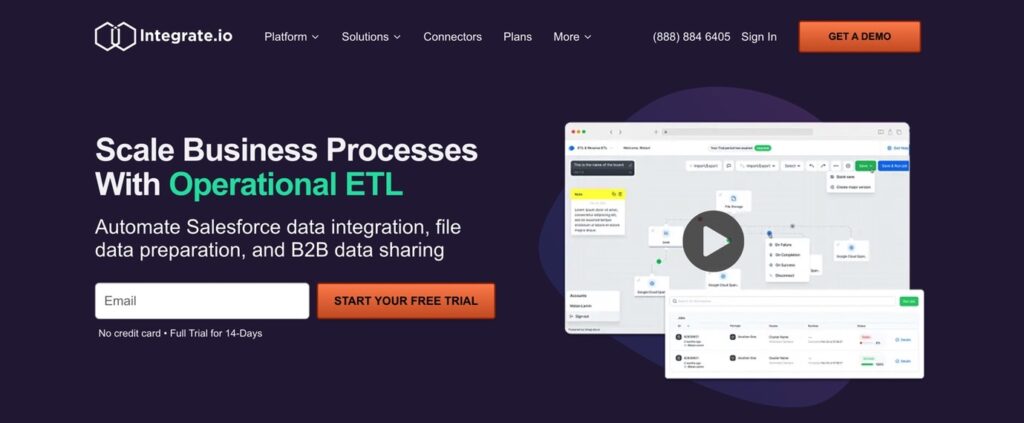
Integrate.io is an all-in-one ETL platform tailored for cloud-based data integration, good for managing MySQL data workflows. It simplifies data pipeline creation, supporting MySQL integration with various applications and services. Integrate.io allows easy data transformation and scheduling, making data accessible for analysis and reporting. The platform is optimized for scalability and offers real-time data integration, enabling businesses to automate data movement as they grow.
Rating
- G2 score is 4.3/5
- Capterra score is 4.5/5
- TrustRadius score is 7.5/10
Pricing
Custom pricing based on data volume and usage.
Pros
- Scalable platform supporting complex ETL operations.
- High compatibility with cloud databases and apps.
- Simplified drag-and-drop interface for workflow design.
Cons
- Limited visualization options without third-party tools.
- Custom pricing may make costs less predictable.
Microsoft Power BI
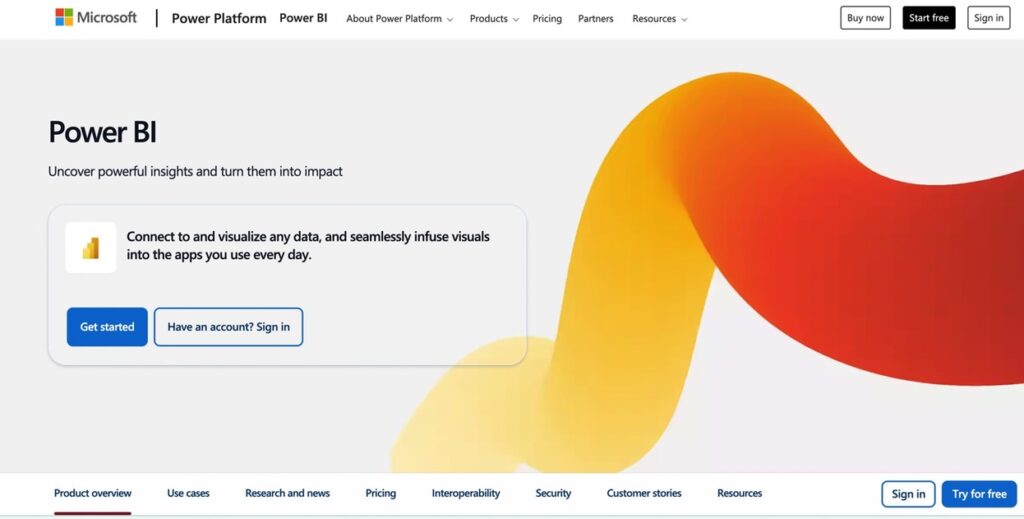
Microsoft Power BI is a business intelligence system that allows users to analyze and visualize MySQL data through a suite of powerful visualization tools. It supports data integration from various sources, including MySQL, providing real-time insights and interactive dashboards. With built-in AI capabilities, Power BI can uncover trends and patterns within MySQL data. The platform’s integration with Microsoft products makes it popular for companies already within the Microsoft ecosystem.
Rating
- G2 score is 4.5/5
- Capterra score is 4.6/5
- TrustRadius score is 8.4/10
Pricing
The free version is available. The Pro plan starts at $10/user/month.
Pros
- Easy integration with other Microsoft products.
- Robust visualization and analytical capabilities.
- Cost-effective for small to medium-sized teams.
Cons
- Some learning curve for non-technical users.
- Limited to cloud or desktop; the mobile version is less robust.
Zoho Analytics
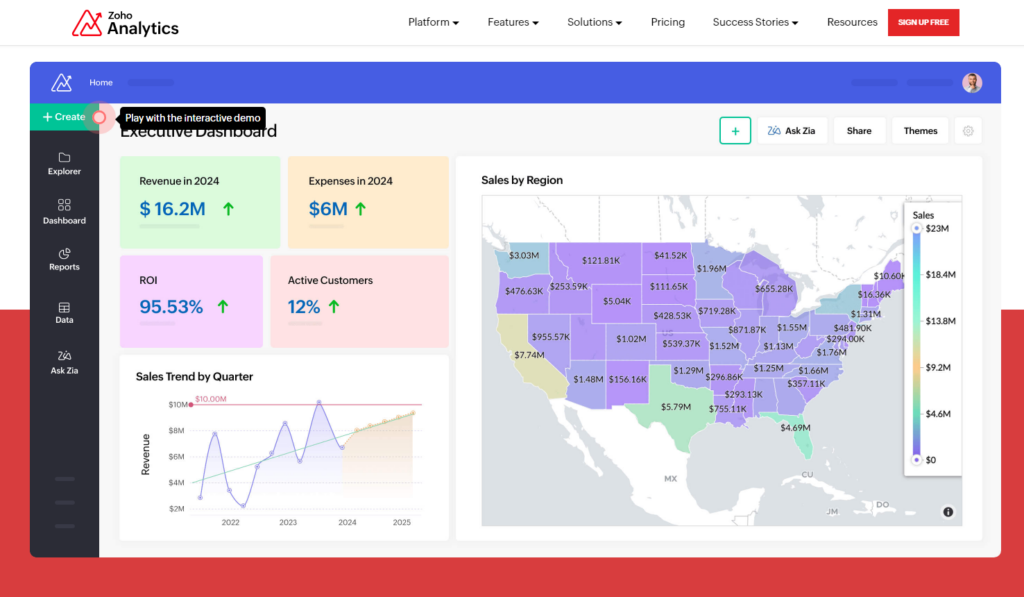
Zoho Analytics is a user-friendly BI tool that offers strong reporting and data visualization features for MySQL users. With various connectors and data integration options, Zoho Analytics allows businesses to create reports and dashboards without heavy technical expertise. It includes AI-powered forecasting and advanced analysis features. That makes it a practical solution for small to mid-sized businesses. Its scalability options and intuitive interface are helpful for companies looking to start with basic reporting and grow.
Rating
- G2 score is 4.3/5
- Capterra score is 4.4/5
- TrustRadius score is 8.2/10
Pricing
Paid plans start at $24/month. The free version is also available.
Pros
- User-friendly interface with AI-powered insights.
- Flexible data connectors and scalability.
- Affordable pricing with a range of features.
Cons
- Fewer advanced visualization options compared to Power BI.
- Limited customization for complex reports.
Domo
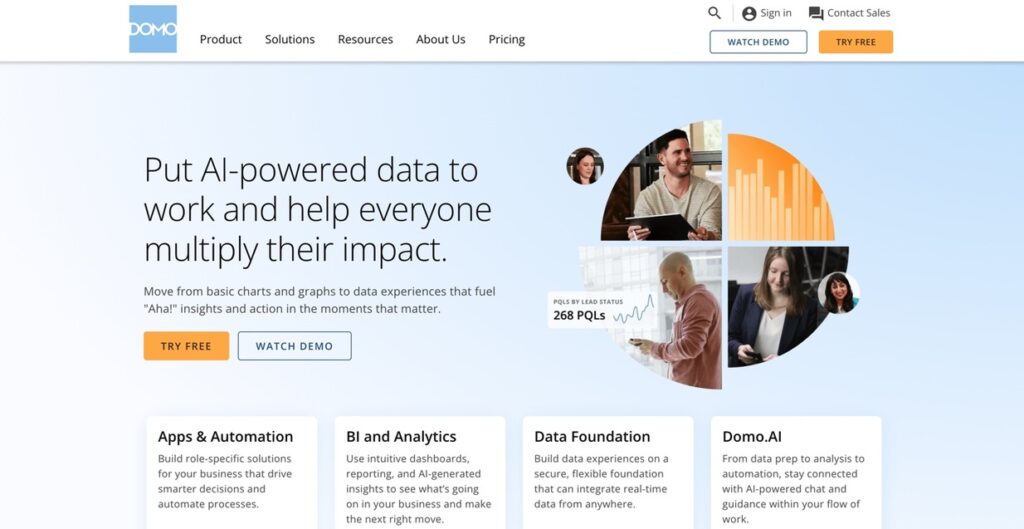
Domo is a cloud-native BI platform for high-speed data integration, visualization, and analysis across MySQL and other sources. It provides pre-built connectors, interactive dashboards, and real-time insights. It’s trendy for enterprises due to its scalability and powerful data handling capabilities, supporting IT and business users with customizable dashboards and mobile access.
Rating
- G2 score is 4.3/5
- Capterra score is 4.3/5
- TrustRadius score is 8.4/10
Pricing
Custom pricing based on features and users. The free trial is available.
Pros
- Real-time, cloud-based data access.
- Collaborative features for team-based reporting.
- Scalable for large enterprises with multiple departments.
Cons
- Higher cost, with pricing only available upon request.
- Complex setup and configuration for new users.
Knowi

Knowi is a modern BI platform with native MySQL support that provides real-time analytics focusing on cloud-based data. It offers SQL-based data extraction, flexible visualization options, and machine learning integration. Knowi’s ability to handle SQL and NoSQL databases makes it versatile, and it’s perfect for businesses that require advanced analytics with minimal setup. It is known for its simplicity and speed and is trendy for real-time data monitoring and interactive dashboards.
Rating
Pricing
Custom pricing, with free trials available.
Pros
- Real-time data analysis with MySQL and NoSQL support.
- Machine learning capabilities for predictive analytics.
- Intuitive dashboard design for quick insights.
Cons
- Limited customization in dashboard design.
- Pricing can be high for advanced features.
RIB BI+ (ex datapine)
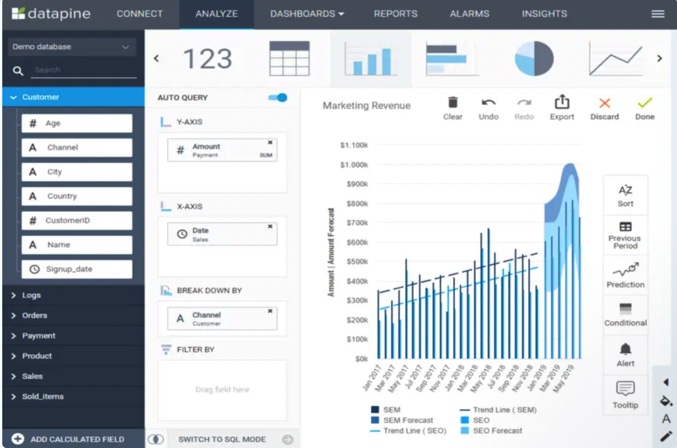
RIB BI+ (ex datapine) is a self-service BI platform offering intuitive data visualization and reporting for MySQL databases. It provides an easy drag-and-drop interface and a variety of connectors and visualization types for real-time data reporting and interactive dashboards. Its powerful analytics and forecasting capabilities make it popular for businesses looking to understand trends and improve decision-making.
Rating
- Capterra score is 4.9/5
- G2 score is 4.8/5
- TrustRadius score is 9.7/10
Pricing
The pricing starts at $249/user/month. The free trial is available.
Pros
- User-friendly with drag-and-drop report building.
- Real-time data access for MySQL databases.
- Supports advanced analytics with forecasting.
Cons
- Higher starting price.
- Limited customization options for advanced users.
Sisense
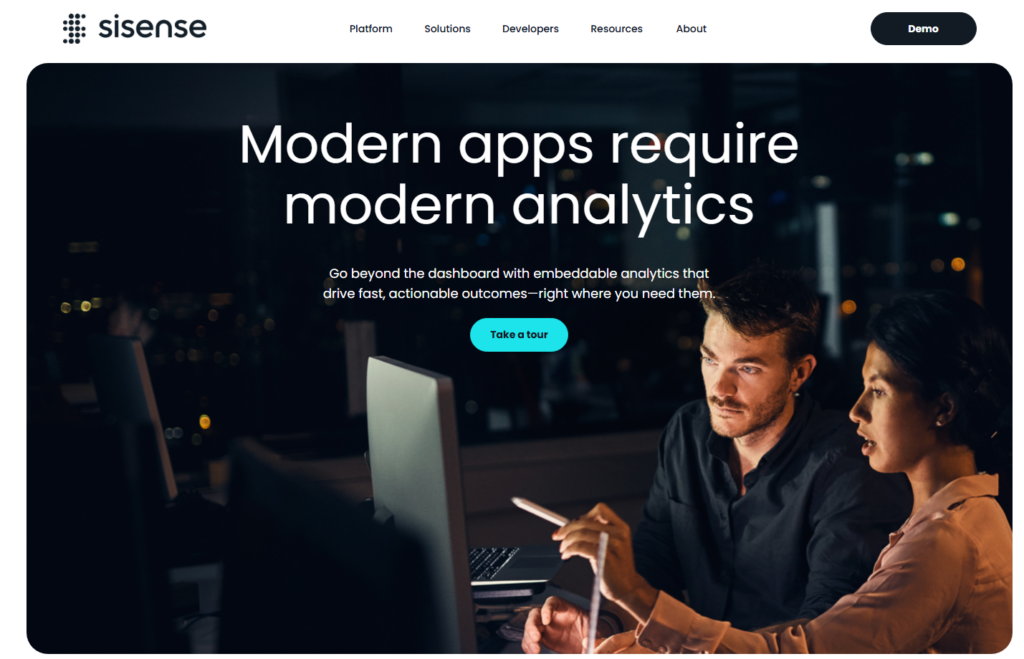
Sisense is a BI platform helping users connect, analyze, and visualize MySQL data in real-time with minimal latency, thanks to its in-chip technology and data processing capabilities. It supports a wide range of connectors, allowing for seamless integration with MySQL and other databases. The solution is highly scalable and suitable for companies that anticipate growing data needs. Its security features fit industries with stringent compliance standards. The embedded analytics allow companies to share insights across departments and customer-facing applications.
Rating
- G2 score is 4.2/5
- Capterra score is 4.5/5
- TrustRadius score is 8.4/10
Pricing
The pricing is custom and based on features and user numbers with a free trial.
Pros
- Optimized for large datasets with quick data processing.
- Highly customizable dashboards and reports.
- Wide range of data connectors, including MySQL and cloud services.
- Embedded analytics for seamless data sharing within applications.
Cons
- Higher cost compared to other BI tools, with pricing available upon request.
- Initial setup and configuration can be complex for new users.
- Advanced features may require a learning curve.
SAP BusinessObjects
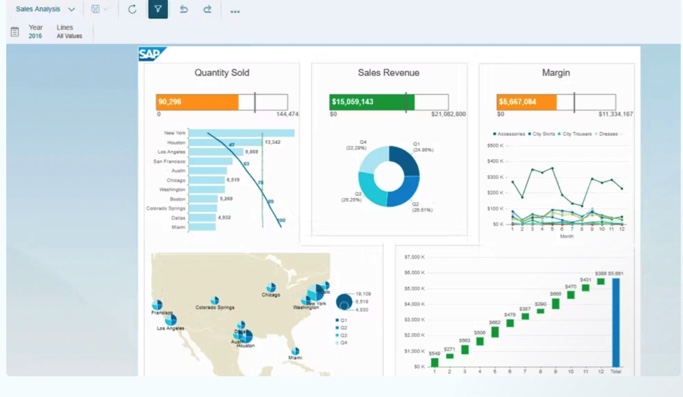
SAP BusinessObjects is an enterprise-grade BI tool with reporting, data visualization, and data management capabilities for MySQL and other databases. It offers a highly customizable platform with advanced features suited to large organizations. The tool supports real-time analytics, data governance, and powerful ad-hoc reporting. With deep security controls and extensive reporting features, SAP BusinessObjects is trendy in sectors with strict compliance needs.
Rating
- G2 score is 3.8/5
- Capterra score is 4.3/5
- TrustRadius score is 8/10
Pricing
Custom pricing for enterprise clients.
Pros
- Highly customizable and good enough for complex reporting needs.
- Strong security and compliance features.
- Scalable for large enterprises with complex data.
Cons
- High cost, targeted at enterprise users.
- Steep learning curve and setup complexity.
Improve Your MySQL Reporting With Data Integration Tools
Reporting tools are only as powerful as the data they process. However, getting information directly from scattered sources into reports can overwhelm your dashboards and lead to inaccuracies. That’s where integration comes in.
By combining reporting tools with data integration solutions like Skyvia, you can automatically consolidate data from various sources into a single, organized destination like a data warehouse (DWH). This streamlined flow ensures clean, up-to-date information for your reports while enabling alerts and error monitoring to keep everything running smoothly.
Skyvia
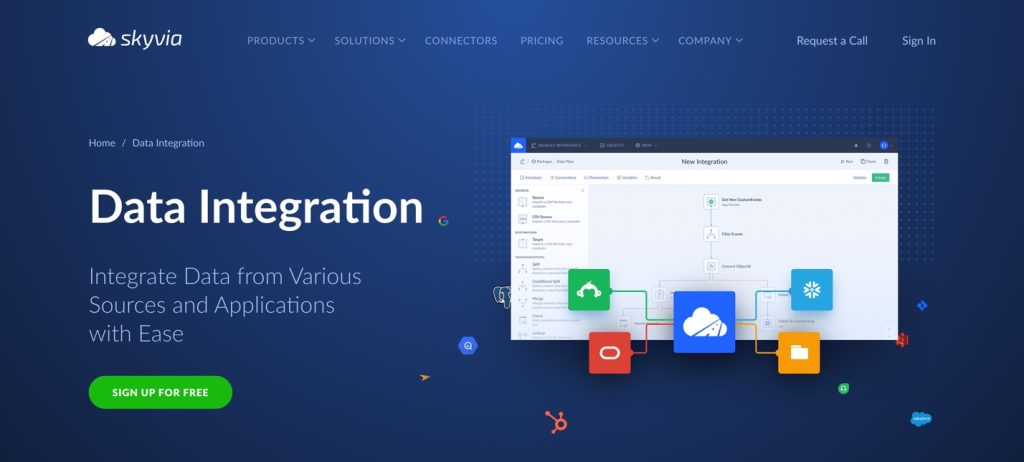
Skyvia is a versatile, cloud-based data integration platform that connects seamlessly with MySQL, supporting all possible integration scenarios: ETL, ELT, reverse ETL, data replication, sync, and more. Except for integration, it provides other data-related products, like backup, query, automation, etc.
With its user-friendly, no-code interface, Skyvia connects to 200+ sources, allowing you to consolidate data into a single location seamlessly. It also offers features to transform, map, and refine data as needed, making extracting what you require from a unified source easy. It also supports OData endpoints and API.
According to many reviews on rating platforms, like G2 Crowd, TrustRadius, and Capterra, customers recommend the platform as very easy to use for handling simple and complex data transformations and scheduling regular data syncs.
Rating
- G2 score is 4.8/5.
- Capterra score is 4.8/5
- TrustRadius score is 9.8/10
Pricing
The pay-as-you-go pricing starts at $79/month. The free plan is available.
Pros
- Easy-to-use interface with no coding required.
- Flexible scheduling for automated data integration.
- High compatibility with multiple data sources and systems.
Cons
- Some advanced features require a paid plan.
- Real-time data integration may be API-limited based on source usage.
Comparative Analysis for MySQL Reporting Tools
The table below provides a comprehensive view of each platform’s key features, ideal use cases, strengths, and weaknesses to help identify the best fit based on organizational requirements for MySQL reporting and security standards.
| Tool | Key Features | Best For | Key Pros | Key Cons | Security and Compliance |
|---|---|---|---|---|---|
| Tableau | Advanced visuals, drag-and-drop reports, data blending. | Advanced visualizations and data exploration. | Excellent visualization options, easy drag-and-drop. | Higher cost per user, limited data manipulation. | Role-based permissions, SSL/TLS encryption. |
| Datadog | Real-time monitoring, automated alerts, performance metrics. | Real-time database performance tracking. | Real-time insights, customizable dashboards. | Limited BI reporting features, high cost for multiple hosts. | Encrypted data transmission, secure user controls. |
| Integrate.io | Drag-and-drop workflows, multi-source support, scheduling. | Scaling data pipelines for large businesses. | Scalable platform, high compatibility with cloud services. | Limited visualizations without add-ons. | SOC 2, HIPAA compliance for healthcare data. |
| Microsoft Power BI | Real-time data access, AI-powered analytics, mobile app. | Interactive dashboards and Microsoft integrations. | Affordable, strong analytical capabilities. | Limited mobile app capabilities, learning curve. | Compliant with GDPR, encryption standards. |
| Zoho Analytics | AI-powered insights, customizable dashboards, data connectors. | Small to mid-sized business analytics. | User-friendly, scalable with AI-driven analysis. | Limited report customization for complex needs. | Role-based access, SSL data encryption. |
| Domo | Real-time data access, custom dashboards, mobile access. | Enterprise collaboration and scalable insights. | Scalable, team-friendly collaboration features. | Higher cost for large teams, complex setup. | Data encryption, user permissions, SOC 2 compliance. |
| Knowi | Machine learning, SQL/NoSQL compatibility, real-time reports. | Real-time analytics and quick deployment. | Machine learning capabilities, quick setup. | Limited dashboard customization. | Data encryption, secure API access. |
| Datapine | Advanced analytics, trend forecasting, interactive dashboards. | Quick data insights and trend forecasting. | User-friendly interface, forecasting tools. | High initial cost, limited customization. | Encrypted connections, multi-factor authentication. |
Sisense | In-chip data processing, embedded analytics, custom dashboards. | Large datasets and high scalability needs. | Quick data processing, flexible dashboards. | High cost, complex initial setup. | SOC 2, ISO 27001 compliance, secure user roles. |
| SAP Business Objects | Custom reporting, ad-hoc analysis, data governance. | Large enterprises with complex data needs. | Strong compliance features, customizable reports. | High learning curve, high cost. | SOC 2, ISO 27001, GDPR compliant. |
Kickstarting MySQL Reporting
Getting started with MySQL reporting can feel like a big step, but the right solutions make it a smooth and rewarding process! Whether managing data for the first time or looking to improve your existing reports, these platforms easily turn raw data into actionable insights.
The steps below show how to do it:
- Choose the Right Tool for Your Needs. Each system has its strengths. Some, like Tableau and Power BI, excel at visualization, while others, such as Datadog and Sisense, are optimized for handling large data volumes or real-time monitoring. Ones like Skyvia are perfect for flexible integration, allowing for data connection across multiple sources.
- Define Your Reporting Goals. Think about what you want to achieve. Are you tracking sales performance or monitoring real-time database performance? Defining your goals upfront allows you to tailor your reports to deliver the necessary insights.
- Design Your Dashboards and Reports. Organize reports according to your goals. Use drag-and-drop report builders, pre-built templates, or AI-driven insights to start building visualizations.
- Automate and Schedule Your Reports. Many MySQL reporting tools support automated report scheduling, making it easy to get updates regularly.
Conclusion
Choosing the right MySQL reporting tool in 2025 depends on what companies need for their data analysis journey. Each tool offers unique strengths.
Tableau and Power BI are go-to’s for powerful, visually rich dashboards. If real-time performance tracking is crucial, Datadog and Sisense provide high-speed, data-driven insights for immediate action. Zoho Analytics and Knowi offer user-friendly experiences with solid visualization and analytics for businesses looking for affordability and ease of use. Consider your primary needs to find a platform that aligns with your goals and technical comfort.
- Scalability.
- Ease of use.
- Advanced reporting and security.
FAQ for MySQL Reporting Tools
What’s the best tool for real-time MySQL reporting?
Datadog and Sisense excel in real-time reporting. Datadog provides live monitoring, which is especially useful for tracking database performance, while Sisense offers high-speed data processing, enabling quick, real-time insights for decision-making.
How do I choose the right MySQL reporting tool for my business?
Consider factors like compatibility with MySQL, performance needs, scalability, and security requirements. For example, if you need automated data syncing, Skyvia offers flexible scheduling and integration features that may suit you well.
Are these MySQL reporting tools secure?
Many tools, such as SAP BusinessObjects, Sisense, and Skyvia, include robust security features like data encryption, role-based access, and compliance with standards like GDPR and SOC2. Always review each tool’s security capabilities to ensure it aligns with your business’s data protection needs.
Can I use multiple MySQL reporting tools together?
Many organizations use a combination of tools. For example, Skyvia can handle data integration and syncs between systems, while Tableau or Power BI could handle the visualization aspect, giving you the best of both worlds for your reporting and analysis needs.

